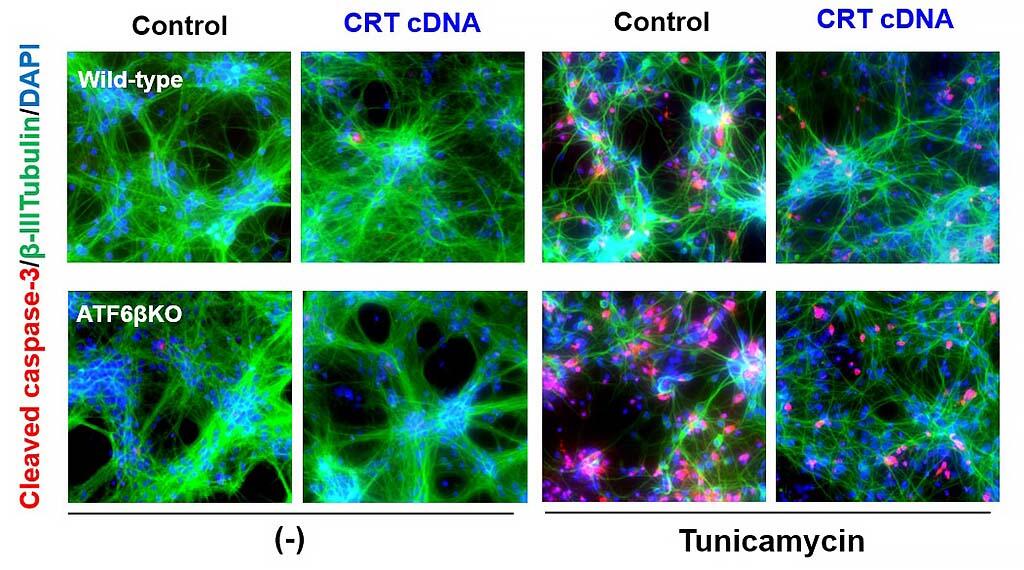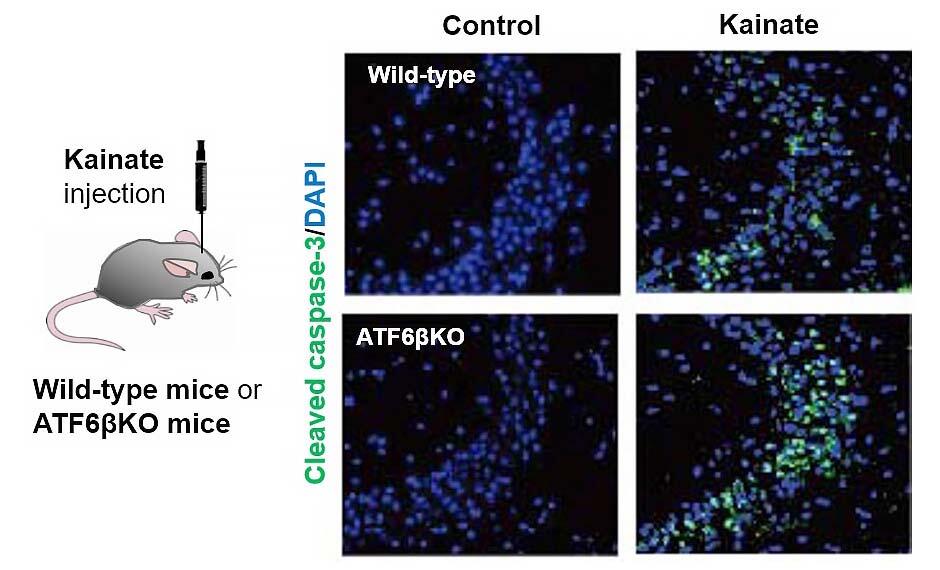The research group consisting of Professor Osamu Hori, Department of Medical Sciences, Kanazawa University, Professor Dinh Thi Nguyen, Department of Medical Sciences, Graduate School of Pharmaceutical Health Sciences, Kyoto University, Professor Kazutoshi Mori, Graduate School of Science, Kyoto University, and Professor Seiichi Oyadomari of the Institute for Advanced Enzymology, Tokushima University, has discovered a new molecule that suppresses nerve cell death in the hippocampus of the brain.
The hippocampus, which is important for the formation of memory, is known as a highly damage-prone region of the brain. One of the reasons for this is related to excitotoxicity. Glutamic acid, an excitatory neurotransmitter, is found excessively around nerve cells, which results in a large amount of calcium ions flowing into the nerve cells, and eventually causes nerve cell death. Several research groups have focused their attention on the endoplasmic reticulum (ER) stress that occurs during the process of hippocampal neuronal death.
In mammals, two types of molecular ATF6 responsible for the ER stress response are ATF6α and ATF6β. ATF6α mainly operates under endoplasmic reticulum stress, which appears helpful for improving the endoplasmic reticulum environment and in conferring neuroprotection. However, little is known about the role of ATF6β as of yet.
The group first noted that ATF6β expression was higher in the hippocampus, and subsequently compared the gene expression in the hippocampus of wild-type and ATF6β knockout (KO) mice. Consequently, they found that only calreticulin (a calcium-binding protein present in the endoplasmic reticulum) was specifically reduced in ATF6βKO mice. Calreticulin regulates the amount of intracellular calcium. Therefore, a comparison of the calcium level in the neuronal cells of wild-type and ATF6βKO mice was conducted. This comparison revealed that the amount of calcium in the endoplasmic reticulum was reduced, and conversely, the amount of cytosolic calcium was increased in the neuronal cells of ATF6βKO mice compared with that in the neuronal cells of wild-type mice. Furthermore, they confirmed that cell death that occurred under endoplasmic reticulum stress was increased in the neuronal cells of ATF6βKO mice compared with that in the neuronal cells of wild-type mice, and that increasing calreticulin at this time alleviated neuronal cell death.

Credit: Kanazawa University
Similar to observations in cultured neuronal cells, injection of kainic acid, which has a similar effect to glutamate, into the hippocampus of the mouse brain confirmed severe neuronal death in ATF6βKO mice compared with that in wild-type mice, and the neuronal death was mitigated by the administration of compounds with calcium-modulating effects. These results suggest that ATF6β regulates the calcium content in hippocampal neuronal cells via calreticulin to prevent neuronal death. "In the future, by searching for compounds that increase the amount or activity of ATF6β and calreticulin, it will be possible to develop preventive and therapeutic agents for stroke, Alzheimer's disease, and memory disorders associated with aging," said Professor Hori.

Credit: Kanazawa University
The original journal article can be read at the following link: Nguyen et al., Sci Rep. 2021, Jun 22;11(1):13086. doi:10.1038/s41598-021-92529-w.10.1038/s41598-021-92529-w.
This article has been translated by JST with permission from The Science News Ltd.(https://sci-news.co.jp/). Unauthorized reproduction of the article and photographs is prohibited.




